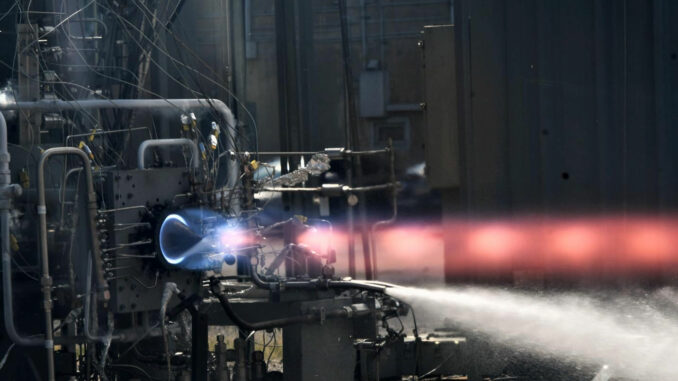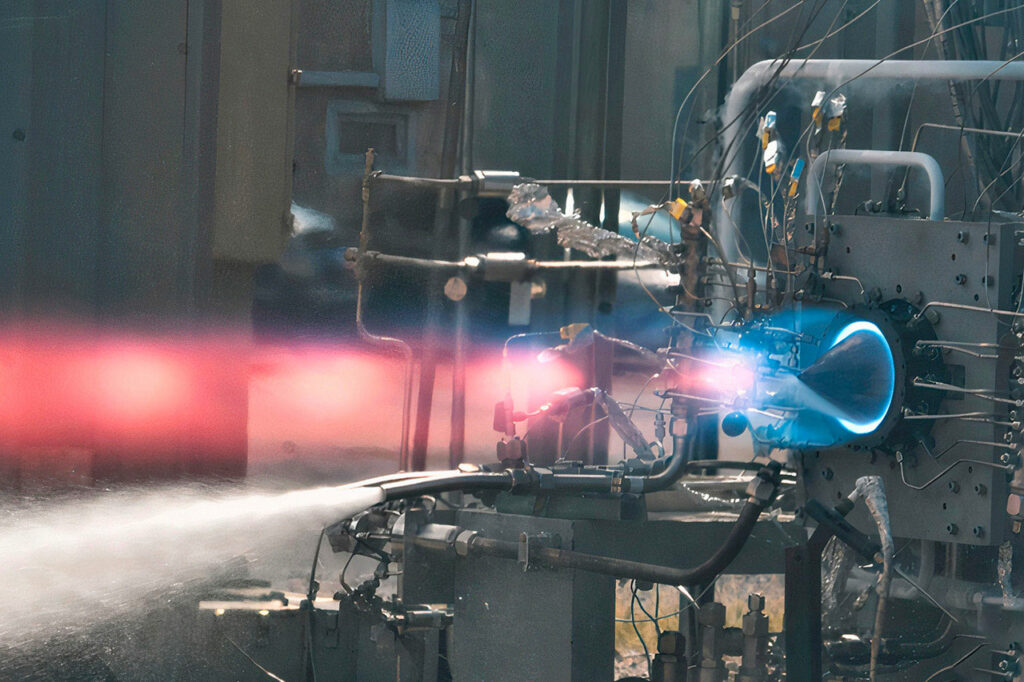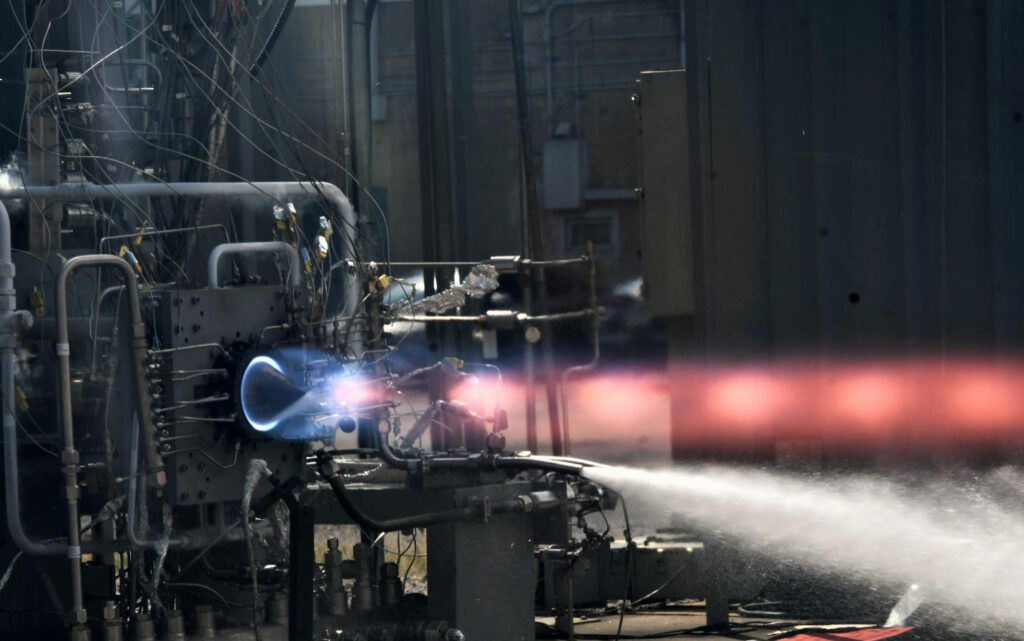
Venus Aerospace, in collaboration with NASA, has taken a major step forward by testing an innovative nozzle for its rotary detonation engine, bringing affordable hypersonic flight closer to reality.
Venus Aerospace, a Houston-based company, is developing a rotary detonation engine (RDRE) in partnership with NASA. This engine uses supersonic shock waves for more efficient combustion, enabling flights at speeds exceeding Mach 5. Recently, an innovative 3D-printed nozzle was successfully tested, improving the engine’s performance. This technical breakthrough could revolutionize air travel by making hypersonic flights more accessible and fuel-efficient.

Rotary detonation propulsion: a major technological breakthrough
The rotary detonation engine (RDRE) represents a significant innovation in the field of aerospace propulsion. Unlike conventional combustion engines, the RDRE uses supersonic shock waves to burn fuel, providing faster and more efficient combustion. This technology reduces the size and weight of the engine while increasing its power and energy efficiency.
The advantages of the RDRE include:
- Increased energy efficiency: detonation combustion allows for better conversion of chemical energy into mechanical energy.
- Reduced size and weight: the compact design of the RDRE facilitates its integration into various types of aircraft.
- Versatility: RDRE can operate with different types of fuel, offering operational flexibility.
However, there are challenges to implementing this technology, particularly in terms of thermal management and detonation wave control. Venus Aerospace is actively working to overcome these obstacles to make RDRE viable for commercial and military applications.
Collaboration with NASA: development of an innovative nozzle
As part of a partnership with NASA, Venus Aerospace has developed an innovative nozzle for its RDRE. This nozzle, manufactured using 3D printing, has been designed to optimize gas flow and improve engine performance. Tests have shown that this new design exceeds expectations in terms of efficiency and durability.
Features of this nozzle include:
- Optimized design: the geometry of the nozzle allows for efficient gas expansion, increasing the thrust generated.
- Advanced materials: the use of high-temperature-resistant materials ensures the nozzle’s durability.
- Additive manufacturing: 3D printing enables fast and accurate production, reducing manufacturing costs and lead times.
This technical breakthrough is crucial to the success of the RDRE’s future flight tests, scheduled for the coming months.
Prospects for hypersonic flight: implications and applications
The development of the RDRE by Venus Aerospace paves the way for numerous applications in the field of hypersonic flight. Speeds in excess of Mach 5 significantly reduce travel times, offering advantages for both passenger transport and military missions.
The implications of this technology include:
- Commercial transport: Transcontinental flights in a matter of hours could become a reality, transforming the landscape of air travel.
- Military applications: The ability to quickly reach areas of strategic interest offers a significant tactical advantage.
- Space exploration: The RDRE could be used for space missions, providing efficient propulsion for launches and orbital maneuvers.
However, challenges remain, particularly in terms of regulation, safety, and infrastructure. Collaboration between the public and private sectors will be essential to overcome these obstacles and realize the potential of hypersonic flight.

Hypersonic flight market: growth and opportunities
The hypersonic flight market is growing rapidly, driven by technological advances and growing interest in faster and more efficient means of transportation. According to recent studies, this market is estimated to be worth several billion euros in the coming years, with a significant annual growth rate.
Factors contributing to this growth include:
- Government investment: Many countries are investing in research and development of hypersonic technologies for military and civilian applications.
- Technological innovation: Advances in materials, propulsion, and aircraft design are facilitating the development of hypersonic vehicles.
- Growing demand: The need for rapid transportation and rapid response capabilities for military missions is increasing the demand for hypersonic solutions.
Venus Aerospace, with its innovative RDRE, is well positioned to capitalize on these opportunities and play a key role in the evolution of the hypersonic flight market.
War Wings Daily is an independant magazine.